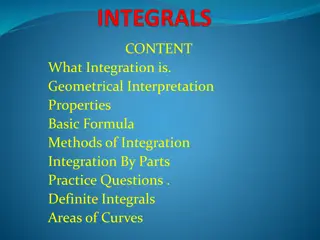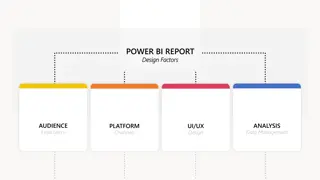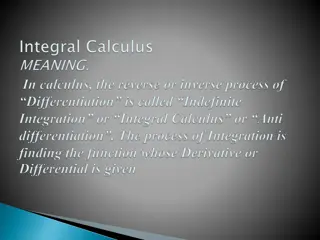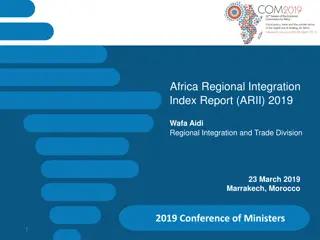Understanding Human Factors Integration in Design: Key Elements Explored
Delve into the realm of Human Factors Integration (HFI) with a focus on its goals, challenges, barriers, and solutions. Explore how HFI enhances the safety, sustainability, and user experience in design processes. Recognize the importance of addressing reactive tendencies, resentment, and ignorance towards HFI to optimize project outcomes and human error prevention.
Uploaded on Oct 07, 2024 | 0 Views
Download Presentation

Please find below an Image/Link to download the presentation.
The content on the website is provided AS IS for your information and personal use only. It may not be sold, licensed, or shared on other websites without obtaining consent from the author. Download presentation by click this link. If you encounter any issues during the download, it is possible that the publisher has removed the file from their server.
E N D
Presentation Transcript
Human Factors Integration The beginning is a good place to start Kayley Clusker
Introduction GOAL PROBLEM BARRIERS SOLUTION Safe and sustainable Too little, too late Reactive, Human Factors (HF) and User eXperience (UX) integration resentment, ignorance 2
The goal Eliminate Sustainable Reduce Isolate Control Safe Profit Personal Protective Equipment Discipline 3
The problem A human, or combination of humans, must design, manufacture, commission, operate, maintain and dispose of each control measure: leading to the opportunity for single, multiple and combined human error(s). 4
The barriers REACTIVE Reactive organisations only call upon HF and UX in response to an incident where human error has been identified as the root cause or a notice from the Competent Authority (CA). This usually occurs in industries where Human Factors is less regulated. 5
The barriers RESENTMENT Resentment is often expressed at the level of detail, time and resource required for the HF/UX Assessments. Although proportionality should always be considered to ensure that the appropriate level of rigour is applied, the potential for HF/UX to impact design and project progression, can sometimes be resented. Common in highly regulated sectors e.g. the Nuclear, Defence and COMAH industries. 6
The barriers IGNORANCE The lack of understanding of what HF and UX are and how they can benefit a design or project. This has the potential to progress in one of two ways: continue in that ignorance until external factors bring it to your attention i.e. all is done and you re ready to hit go , until you realise that the go button is too high to reach, is in the wrong language, and is too small to press without pressing all the other buttons. Alternatively, consultants are contracted to integrate HF/UX into the design/process. More common in less regulated industries. 7
The solution Human Factors Engineering applies scientific knowledge about human capabilities and limitations to design. User Experience focuses on designing everything the user comes into contact with, even emotionally. Together, these produce products that are useful, usable, desirable and safe. 8
The solution As one would reach out to Chemical, Electrical, Process and Mechanical Engineering disciplines for input to bids and concept phases, including HF/UX in the initial conversations, will allow for the correct HF/UX expertise to be mustered and at the right time, reducing the potential for oversight and retrofitting. 9
Questions? Kayley.Clusker@atkinsglobal.com 10























